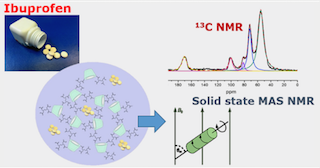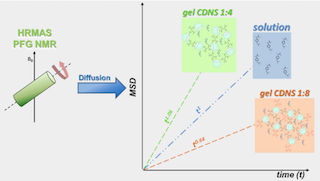Research gives new hints for anti-inflammatory drug delivery
|This work, conducted by the research group around Prof. Andrea Mele, aimed at testing exploring the capability of two types of nanosponges for the entrapment and delivery of Ibuprofen, the Active Principle Ingredient (API) of many anti-inflammatory drugs.
Nanosponges are formed from molecules that link to each other forming macromolecular structures, characterised by the presence of cavities that can accommodate other molecules, like Ibuprofen in this case. In this way, when the nanosponge is loaded with the drug, it becomes a carrier. The carrier provides a better stability to the drug and allows to control the delivery process. In some cases, the nanosponge can even help to select the most active one from a group of molecules.


The dynamics and interactions of two formulations of cyclodextrin nanosponges with Ibuprofen, were studied with a particular Nuclear Magnetic Resonance (NMR) technique (cross-polarisation magic angle spinning) and X-Ray Diffraction, available at CERIC-ERIC.
The authors concluded that the repertoire of NMR methods used was helpful to monitor the effective state of the drug in the carrier and of the polymer carrier in the presence of the guest drug. In a counterintuitive way, Ibuprofen was found to form small aggregates (dimers), in turn organized in small crystalline domains confined in the CDNS cavities. CDNS retains its structure which does not undergo changes upon addition of the drug.
However, the NMR measurement pointed out that the dynamic regime of the polymer indeed changed. This finding can be used as a fingerprint of the formation of aggregation, at molecular level, between the drug and the host polymer rather than a pure physical conglomerate.



